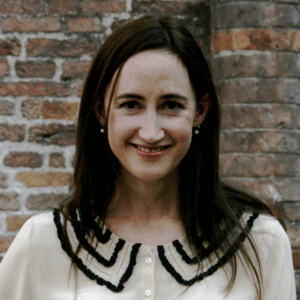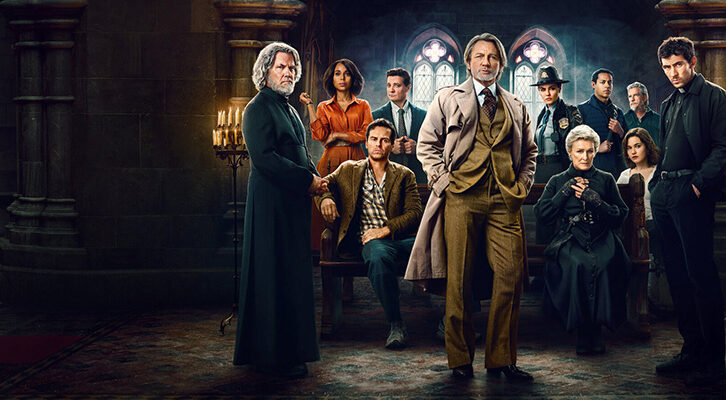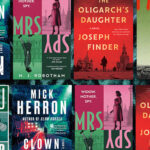
On Morals, Ethics, and Writing a Novel Inspired by a Story Ripped-From-the-Headlines
Darrow Farr on Patty Hearst, Exploitation, and Writing Other People's Traumas
When I was seventeen, my friend—the kind of person who always finds hidden gems in used bookstores—leant me Every Secret Thing, Patricia Hearst’s memoir about being kidnapped and forcibly radicalized by an urban guerrilla group. Hearst spent nearly all of 1974 on the run with the Symbionese Liberation Army, during which time she robbed banks and shot up a sporting goods store before she was arrested and tried for the crimes she unwillingly participated in.
On the front porch of my parents’ quiet suburban home, I devoured the book in one sitting. Wow, I thought as I read the last page. Why can’t something that exciting happen to me?
A teenage brew of detachment and naivety allowed me to construe Hearst’s trauma as enviable. When my fascination with Patty Hearst led me to John Waters, who has directed Hearst in five of his films, I predictably discovered a kindred spirit in him.
Waters professes to have been obsessed with Patty Hearst—he even attended her infamous trial. He dramatizes that obsession in his 2000 film Cecil B. Demented, in which a cult of guerrilla filmmakers kidnap a Hollywood actress and convert her into a gonzo, gun-wielding indie darling.
Hearst plays the mother of a guerrilla, and in one scene, she hosts a press conference avowing her son’s goodness and innocence, parodying her own parents’ televised pleas. The scene–and whole movie–could be considered offensive and exploitative if it weren’t for Hearst’s involvement.
When my fascination with Patty Hearst led me to John Waters, who has directed Hearst in five of his films, I predictably discovered a kindred spirit in him.
Hearst admitted she had her reservations, but she trusted Waters’s vision and the sincerity that characterized their friendship. Waters has suggested acting enabled her to recontextualize her celebrity and, for the first time, find pleasure in it.
Personally, I’d argue that appearing in John Waters’s films empowered Hearst to play with her public perception. Throughout her trial, she was alternately portrayed as a normal, even bland girl ripe for brainwashing, and as a wild child, a “rebel looking for a cause,” and her parts wink at both characterizations. She’s nearly always cast as your average upstanding citizen.
While her performances are straight, almost deadpan, the audience knows that just appearing in a Waters movie means you’re a whack job. As a Dreamlander, Patty Hearst could play the normie and the freak on her own terms.
Waters and Hearst first met while Hearst was in Cannes promoting the Paul Schrader-directed adaptation of her memoir, a starkly different collaboration from her future work with Waters. Schrader’s Patty Hearst is a dreamlike, expressionistic movie that uses bold lighting techniques, deconstructionist sets, and surreal imagery to convey disorientation and claustrophobia; it’s more a psychological interpretation of her memoir than a journalistic one, and she called it “true in spirit” to her experience.
But Hearst does not necessarily cooperate with every writer or director who approaches her. When the journalist Jeffrey Toobin was writing a book about Hearst’s kidnapping, she declined his request for an interview.
“I’m tired of being a cash cow for hack writers like Jeffrey Toobin. He is an emotional rapist,” Hearst reportedly told a friend.
In 2016, Toobin published his unauthorized account, American Heiress, and the following year, after it was announced that James Mangold would direct the adaptation, Hearst released a statement condemning it. Amazingly, Twentieth Century Fox canceled the project almost immediately after Hearst spoke out against it.
Hearst’s statement brings to mind a Medium article Amanda Knox wrote in 2021, which took Tom McCarthy to task for writing and directing Stillwater, a film loosely based on Knox’s wrongful conviction for the murder of her study abroad roommate, without her involvement. Saliently, Knox took issue with the fact that her name was used to promote the film at the same time McCarthy asserted her story was only a starting point, that his version differed too drastically from real-life events to be considered appropriation.
“Who should get to exploit a name, face, and story that has entered the public imagination?” Knox asked.
Artists that take inspiration from the headlines are often accused of “profiting” off these stories; whether that’s acceptable is a moral question, since as long as the work is fictionalized, artists are under no legal obligation to get permission from the source of their inspiration, let alone compensate them. Particularly in cases that involve a victim, the idea of compensation is unspoken but implied.
I wonder to what extent this springs from the ethical framework of civil suits—if you can’t find the justice you’re seeking in criminal court, there’s always civil court, where justice equals financial compensation.
To be fair, Knox’s past may very well prevent her from living a normal life. There is a whole subclass of victims whose notoriety forces them into the true crime industrial complex, who must support themselves off their trauma.
But Patricia Hearst, heiress to one of America’s great family fortunes, doesn’t need ownership of her story in order to make ends meet. For her, it’s a question of artistry and attitude—and perhaps affinity.
Based on Hearst’s statement condemning Toobin’s American Heiress, it’s clear that a big part of her objection to Toobin’s project was that she simply disliked him—she used the words “arrogant” and “egotistical” to describe him—and who can blame her?
Since her trial, our understanding of trauma responses has deepened significantly, yet Toobin concluded that Hearst was a rational and willing member of the SLA—the same verdict the court and press made forty years ago. When Hearst scolded Toobin for “romanticiz[ing] my rape and torture and call[ing] my abduction a ‘rollicking adventure,'” I thought, Good for her; she’s so right, then turned back to my own novel portraying her ordeal as a rollicking adventure.
Like many authors writing ripped-from-the-headlines stories, I maintain that Hearst’s kidnapping and radicalization was only the starting point for my novel, The Bombshell; I was never interested in writing a one-to-one account.
What has fascinated and inspired me since I was a teenager was the idea of Patty Hearst, the bogeyman she represented in the minds of Americans hungover from the radical ’60s. Here was a wealthy, educated young woman who would risk it all for a once-in-a-lifetime thrill, who was capable of denouncing her family’s bourgeois values and dedicating herself to the liberation of the oppressed.
The protagonist of my novel is modeled off this myth. Seventeen-year-old Séverine Guimard is privileged like Patty but makes no pretense of being normal; she knows she’s destined to be a famous actress. After being kidnapped by militant Corsican separatists, she ends up joining their cell, not only because she begins to sympathize with their cause, but because she knows this is her chance to become a star.
It may be in bad taste to model my protagonist after the false persona created by Hearst’s prosecution, but John Waters—one of bad taste’s most fervent champions—was hugely influential on The Bombshell. I drew on his use of melodrama, camp, and black comedy to tell the stories of unusual people in unusual situations.
I didn’t want to write a straightforward trauma narrative about a straightforward victim; I wanted to write a novel about the most extra, delulu teenage girl on the planet, a girl with a literally dangerous amount of confidence, the personification of the meme of Tweety Bird holding a smoking gun saying, “Ok bitch call the cops, I’ll have sex with them.”
I haven’t spoken about The Bombshell once without evoking Patty (I’m doing it now!). Someone who’s not familiar with her case could pick up my novel and assume Hearst was also a shameless fame-seeker, undoing all the work she’s done to rightfully insist on her victimhood.
But rewatching Cecil B. Demented—which Roger Ebert compared to “a bad sketch on Saturday Night Live“—I remain astonished that Hearst approved of it. On the off-chance she ever came across my book, would she appreciate the hyperbolic fictionalization and let it slide? Or would she deem it another exploitative project that cashes in on her trauma?
Let’s be honest—all writers are obsessed with money. That said, most first-time novelists write without any certainty of “cashing in.” A novel requires an enormous and unforeseeable amount of time and energy, so you must be propelled by something other than the slim possibility of a fat advance.
For me, it was a desire to mine my unsophisticated teenage fantasy of kidnapping as a thrilling adventure, a path to self-actualization. I wanted to write a black comedy, but found myself earnestly engaging with Séverine’s fear, insecurities, and coping mechanisms, as well as the inconsistencies of victimhood, ethics of political violence, the power and limitations of youth and beauty, and how control fluctuates in relationships.
Waters is known for befriending outcasts like Hearst and Manson Family member Leslie Van Houten, to whom he dedicated an essay in his collection Role Models. “Leslie was left holding a bag so terrible that few of us could imagine the weight,” he wrote. “I hoped in some tiny way to help her carry it by imagining it myself.”
Just as I ended up having to engage earnestly with my material, Waters had to engage earnestly with these tabloid figures—and start seeing them as real people—for them to trust and endorse his interpretations of them. Empathizing with your characters isn’t the magical answer for writing about real events without fear of pushback, but it is the bare minimum.
The story of Patty Hearst’s kidnapping helped shape me, even if I initially misinterpreted the message.
Invariably, public narratives do, for better or worse, end up wriggling out of the grip of the people who lived them. At best, they can produce a feeling of kinship. For onlookers, it’s natural to make art about public figures because their history feels like it’s part of our history, too.
The story of Patty Hearst’s kidnapping helped shape me, even if I initially misinterpreted the message. When I reread Hearst’s memoir as an adult, I found new resonances and a new well of compassion for that frightened nineteen-year-old with a superhuman will and ability to survive.
Hearst has expressed a sense of weariness that Americans are still so interested in her kidnapping, but I’m grateful that she’s enabled her story to be shared in such a wide variety of forms. I hope that if she ever reads The Bombshell, she’ll recognize a conversion similar to the one she elicited in Waters: that of a delusional fan who, in time, tried to imagine the weight of her bag.
______________________________

The Bombshell by Darrow Farr is available via Pamela Dorman Books.
Darrow Farr
Darrow Farr is a Salvadoran American writer. She was a Stegner Fellow in Fiction at Stanford University from 2017 to 2019 and received an MFA in creative writing from the Michener Center at the University of Texas. The Bombshell is her debut novel. She was born and raised outside Philadelphia, where she now lives with her husband and son.



















